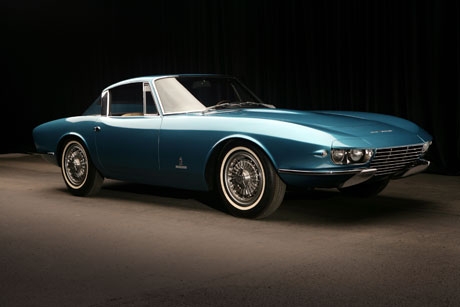The one and only 1963 Chevrolet Corvette “Rondine” coupe was built for the Paris Auto Show by renowned design house Pininfarina for Chevrolet. The car features a 327-ci, 360-hp fuel-injected V8 with 4-speed and power brakes. This historically significant prototype has been stored and preserved at the Pininfarina Museum since new and is being offered for the first time.
Using the new 1963 Corvette chassis, Pininfarina realized this special coupe. The body style is based on the idea of simplicity and functionality and features a remarkable outline owing to the lightness of its sections. The limited use of chrome stresses the sober elegance and harmony of the whole.
The front was designed for maximum aerodynamic efficiency with a smooth curve projecting from the front fenders. The central grille features thin chrome strips, while eyebrows partly cover the headlights when they are turned off. The two-piece front bumper is also unique to the car and ends at each side of the grille.
The side panels take a sharp line from the nose back into the door, where it curves over the tail in a “Coke-bottle” effect, which makes the car seem slender. The rear end features a unique “swallow tail” design, with the rear fenders projecting further than the trunk. The broken line across the rear contributes to the light effect of the design and the taillights are flush in the rear fenders. The gas filler cap is quick-release.
The roof follows the line of the large curving windshield and is quite thin and flat with a wraparound rear window. The luggage compartment is located inside and below the rear window. The interior remains unchanged and is made of leather with ventilation panels in the rear of the seats.

